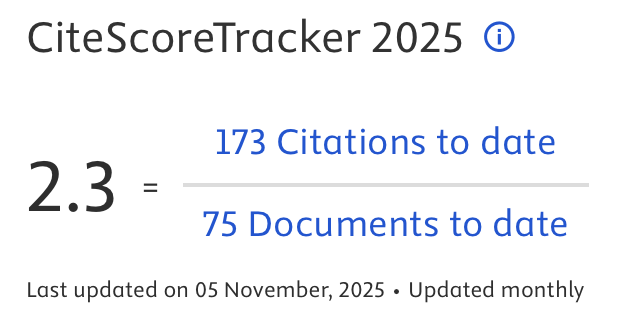KAJIAN KRITIS ATAS KITAB AL-TAFSIR AL-TAWHIDI KARYA HASAN AL-TURABI
DOI:
https://doi.org/10.14421/qh.2014.1501-03Abstract
هذه الرسالة تبحث عن كتاب التفسير التوحيدي لمؤلفه الدكتور حسن الترابي. يثير الكاتب إلى بحث هذا الكتاب لما فيه من المنهج الموضوعي البنائي الذي سماه مؤلفه بالمنهج التوحيدي في محاولته لإعادة إظهار هدى القرآن على شكل موحد لسياقات القرآن ككلية لا جزئية. ومن هذا البحث اكتشف الكاتب نتيجتين أساسيتين: أما (النتيجة الأولى) فهي أن الطرق التي سلك بها حسن الترابي في كتابة هذا الكتاب هي (1) أن يذكر اسم السورة التي سيفسرها مع الإتيان ببيان اسمها، و(2) أن يبين نوع السورة مكية أم مدنية، و(3) أن يوضح ما تحتوي عليه السورة من تعليق الآيات بجميعها على وجه الأكمل بحيث يتحد غرض الآيات الواردة في السورة، و(4) أن يبين تفاصيل المعاني من الآيات مع تفصيل قضية موضوعاتها إن كان الوضوع في السورة أكثر من موضوع واحد، و(5) أن يبين مجملات المعاني في كل قضية الموضوعات مع بيان ما يوحّد ويعلّق ما في قضية واحدة وقضية آخر. وأما (النتيجة الثانية) فهي أن ما جاء به الدكتور حسن الترابي من المنهج التوحيدي ليس فيه شيئ من التجديد لأنه لا يزال داخلا في استخدام تيار النظريات السابقة وهي نظرية المناسبة بل ولا يعطي منهجا جديدا في بناء المنهج البنائي الذي ذكره المؤلف بالمنهج التوحيدي إضافة إلى أن ما جاء به الدكتور حسن الترابي من المنهج التوحيدي كان مماثلا لما جاء به محمد محمود الحجازي من منهج الوحدة الموضوعية في القرآن الكريم في أن كلا من هذين المنهجين يعين أن هناك سورا يقتضيها موضوع أساسي واحد وتندرج تحته موضوعات كثيرة مكملة للموضوع الأساسي وأن هناك سورا يقتضيها كثير من الموضوعات ثم تتعلق قضية كل من الموضوعات بقضية أخرى على شكل يوحدها.
 Abstract viewed: 658 times
|
Abstract viewed: 658 times
|
 PDF downloaded = 3790 times
PDF downloaded = 3790 times
Downloads
Published
How to Cite
Issue
Section
License
Publishing your paper with Jurnal Studi Ilmu-ilmu al-Qur'an dan Hadis means that the author or authors retain the copyright in the paper. Jurnal Studi Ilmu-ilmu al-Qur'an dan Hadis uses license CC-BY-NC-ND or an equivalent license as the optimal license for the publication, distribution, use, and reuse of scholarly works. This license permits anyone to copy and redistribute the material in any medium or format and must give appropriate credit, provide a link to the license, and indicate if changes were made. If you remix, translate, transform or build upon the material you may use it for private use only and not for distribution. Jurnal Studi Ilmu-ilmu al-Qur'an dan Hadis granted an exclusive non-commercial reuse license by the author(s), but the author(s) are able to put the paper onto a website, distribute it to colleagues, give it to students, use it in your thesis, etc, so long as the use is not directed at a commercial advantage or toward private monetary gain. The author(s) can reuse the figures and tables and other information contained in their paper published by Jurnal Studi Ilmu-ilmu al-Qur'an dan Hadis in future papers or work without having to ask anyone for permission, provided that the figures, tables, or other information that is included in the new paper or work properly references the published paper as the source of the figures, tables or other information, and the new paper or work is not direct at a private monetary gain or commercial advantage.
Jurnal Studi Ilmu-ilmu al-Qur'an dan Hadis journal Open Acces articles are distrubuted under the Creative Commons Attribution-NonCommercial-NoDerivatives 4.0 International (CC BY-NC-ND 4.0). Article can be read, copy and redistribute the material ini any medium or format under the following conditions:
Attribution — You must give appropriate credit, provide a link to the license, and indicate if changes were made. You may do so in any reasonable manner, but not in any way that suggests the licensor endorses you or your use.
NonCommercial — You may not use the material for commercial purposes.
NoDerivatives — If you remix, transform, or build upon the material, you may not distribute the modified material.









